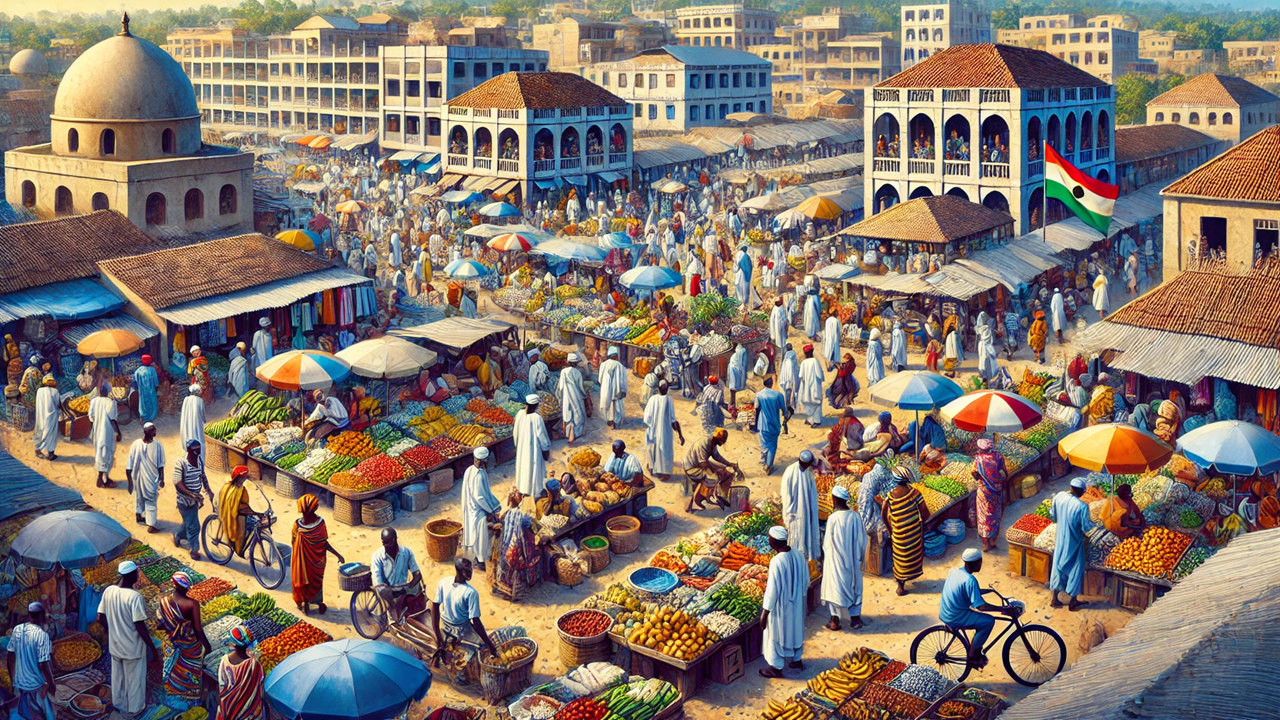CEMAC at a Crossroads: Tackling Economic Slowdown and Paving the Way for Future Growth
The CEMAC Economic Barometer report highlights the region's economic slowdown, fiscal challenges, and high poverty rates in 2023. Despite these issues, Cameroon emerged as the fastest-growing economy in the region. The report emphasizes the need for comprehensive reforms in governance, private sector promotion, human capital investment, infrastructure development, digital economy enhancement, and climate change adaptation to achieve sustainable growth.

The recent "CEMAC Economic Barometer" by the World Bank offers a comprehensive look at the economic landscape of the Central African Economic and Monetary Community (CEMAC). The barometer highlights the region's economic growth slowdown, fiscal challenges, and the need for comprehensive reforms to sustain growth and reduce poverty. Let's dive into the key findings and implications for the future.
A Sluggish Economic Growth
The CEMAC region witnessed a notable slowdown in economic growth in 2023, with the growth rate decelerating to 1.7% from 3.1% in the previous year. This slowdown also impacted per capita income, which declined from 0.44% to -0.33%. Comparatively, CEMAC's growth was less than half of the 3.5% growth observed in the West African Economic and Monetary Union (WAEMU) and fell below the Sub-Saharan Africa average of 2.9%.
Equatorial Guinea's economy took a significant hit, falling into recession with a -5.8% growth in 2023. The primary factors contributing to this downturn were lower hydrocarbon production and a decline in domestic demand. This negative growth stands in stark contrast to the modest growth observed in other CEMAC countries.
Gabon experienced a decline in growth, dropping to 2.3% from the previous year. This reduction was mainly due to decreased production in key sectors such as wood and manganese, high fuel costs, and railway disruptions caused by landslides. Despite these challenges, Gabon managed to avoid a recession.
In contrast, Cameroon emerged as the fastest-growing economy in the CEMAC region, with a growth rate of 3.3% in 2023. Cameroon's relatively higher level of economic diversification and lower dependence on hydrocarbons contributed to this robust performance.
Fiscal and External Challenges
The region's fiscal and external positions deteriorated in 2023, primarily due to lower oil prices and revenues. The decline in crude oil prices, from $97.1 to $80.8 per barrel, adversely impacted CEMAC's export performance. As a result, the current account surplus decreased to 2.2% of GDP from 5.9% in 2022, and gross reserves dropped to 4.8 months of imports. Public debt also increased to 52.8% of GDP in 2023, up from 51.5% in 2022. Despite these challenges, non-oil revenues helped maintain fiscal stability, with the region sustaining a stable average fiscal revenue ratio of 21.2% of GDP.
Inflation, which had been rising since late 2021, began to decline in the second half of 2023. By September 2023, the average year-on-year inflation in the CEMAC region had decreased to 4.7%, down from 6.3% in December 2022. This reduction can be attributed to the regional central bank's (BEAC) tightened monetary policy and the lower prices of most commodities. To support the exchange rate arrangement and contain inflationary pressures, the BEAC maintained a policy rate of 5% since March 2023. Despite these efforts, inflation remained above the regional target of 3%.
Poverty and Employment Challenges
Poverty rates in the CEMAC region remained high, with approximately 31.1% of the population living below $2.15 per day in 2023. Youth unemployment is also a significant concern, particularly in Gabon and Congo, where one in five people is unemployed.
Looking ahead, moderate growth is expected in the CEMAC region, with a projected average growth rate of 2.3% in 2024. However, the outlook for poverty reduction is less optimistic, with the poverty headcount ratio expected to decline only slightly to 30.9% by 2024-2025.
Path to Sustainable Growth
To address these challenges and sustain growth, the report emphasizes the need for comprehensive reforms across several key areas. Firstly, strengthening institutions and improving governance to enhance public service delivery and resource management is crucial. Promoting private sector growth to create jobs and diversify the economy is equally important. Investing in education and health to improve outcomes and support a skilled workforce is necessary to build stronger human capital. Additionally, improving access to electricity, roads, and ports to boost trade and economic activity is vital for infrastructure development. Enhancing connectivity and digital skills to leverage the transformative potential of digital technology is another priority. Lastly, developing adaptation strategies to mitigate the region's vulnerability to climate shocks is essential for sustainable development.
The "CEMAC Economic Barometer" paints a picture of a region grappling with economic slowdown, fiscal challenges, and high poverty rates. However, with targeted reforms and strategic investments, the CEMAC region has the potential to overcome these challenges and achieve sustainable growth and development.
- FIRST PUBLISHED IN:
- Devdiscourse










